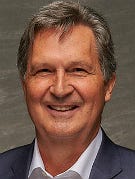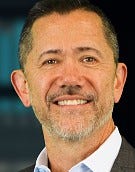Big Sales & Marketing Changes During the Managed Services TransitionBig Sales & Marketing Changes During the Managed Services Transition
Get ready to learn the keys to growth in the shift to managed services.
March 3, 2022

As hardware and software are increasingly delivered as managed services, there are still many partners who need to adapt to recurring revenue. And those who are at any stage of making the transition and want to grow their businesses are generating revenue in new ways. Some are taking aggressive steps to do so.
Channel veterans who have been down this road of industry transitions before understand that staying the course is not a good game plan for thriving. Michael Schmidtmann, who operates Trans4mers, knows many of them who were not afraid to throw out their old playbooks to embrace the new models of delivering technology services.
Three of them will meet each other for the first time at the MSP Summit, co-located with the Channel Partners Conference & Expo, April 11-14. On the first day of the event, Schmidtmann moderates the session, “Radically Reinvent Your Revenue Engine.” The three panelists include:
Joe Rittenhouse, president of business development at Converged Technology Professionals, a RingCentral partner who has rapidly accelerated his sales organization.
Frank Lusko, executive VP of sales at Red River’s managed services Lusko is a channel veteran started as a Mitel dealer in the 1990s, before joining 3Com. (3Com was among the leading networking vendors two decades ago until it was acquired by Cisco.) Lusko later became a large Cisco partner where that sold its Unified Communications offerings. After shifting his business to managed services, it was bought by Red River, one of the biggest Cisco partners in the U.S.
Amy Roman, chief marketing officer at Channel Program, will share how they have adopted to the shifts to managed services, a former chief revenue officer at Logically, and now CMO of Channel Program, a startup. Roman will share how marketing plays a key role in expanding revenues today.
Channel Futures recently interviewed Schmidtmann, Lusko and Roman in advance of the forthcoming session. What follows is an edited transcript of those separate conversations.
Channel Futures: What does a channel leader have to do to expand their revenue opportunities today?

Trans4mers’ Mike Schmidtmann
Michael Schmidtmann: Well, as a business owner, I’m always wondering what’s new, what’s different and how can I take advantage of it to improve my business? Everybody is trying to grow their business and they’re all wondering, what’s new, what’s different, what can I do?
Schmidtmann, Lusko and Roman are three of more than 100 top speakers at the Channel Partners Conference & Expo/MSP Summit. Register now to join 6,500 fellow attendees, April 11-14. You can also interact with more than 300 key suppliers and technology service distributors. |
CF: There is no easy answer, of course.
MS: It used to be straightforward. When I started in this business, you grew your sales by adding salespeople. My business started in the Washington, D.C., area. I started with one salesperson, and at the end, I had 15. When I wanted to add salespeople, I added them, and each of them would sell. Now you have fewer salespeople selling more, and you now have three flavors of marketing, a couple of flavors of new business generation and customer events. You also have people who specialize in working with vendors to get promotional dollars, you have outbound salespeople, clients’ success people and vertical market overlays. Now it’s very specialized.
CF: What has changed the most?
MS: There are three moving parts that I see that I plan to bring up in the session. One is the dynamic that partners have fewer people who are selling more. It used to be if you wanted to grow sales, you added people. Now it’s the opposite, you have fewer people selling more. Secondly, is specialization. You’ve taken the whole process of identifying a customer, selling to then, upselling, taking them through the stages of implementing, retention and growing. Now you’ve got a dozen people doing …
… what used to be one or two people in these functions. And third is automation tools. We didn’t have that 10 years ago.
CF: Have we gotten to fewer people selling more because it’s more efficient? Or is it because there are fewer people available to sell more or more or capable that have the right skills?
MS: When I had my sales team of 15 salespeople, I figure five of them made me all of my money. The other 10 people were costing me money, but not selling anything. And I had no marketing, no client success, no customer events people. If I were to do it today, I’d have five salespeople selling the same amount or more. And I’d have three or four marketing people, a couple people doing customer events, I’d have a couple people just handling the embedded base, making sure they’re happy.
CF: But aren’t those in these marketing and customer retention roles more of a cost than those who were in sales, even if they weren’t the top producers?

Red River’s Frank Lusko
Frank Lusko: We’ve focused on bigger customers, though we will take smaller customers that are strategic, especially if we can add security and compliance services to them. We look for those that can bring in $20,000-$30,000 a month or more. And the whole idea there is we see a 25% contribution from marketing. I want 25% to come from those outbound efforts of those SDRs, and then 50% to come from the field. When you get that mix and that model working, it’s very predictable. When I’ve got a great pipeline and starting the year strong, have that engine rolling, and they are consistently delivering, I can almost count on a deal a week.
CF: Obviously, there’s this big shift in the revenue model. How far along would you say that the partner community is in terms of fully adapting to that?
MS: In technology, you’ve seen that bell curve of the innovators. You have the early adopters who are the first to try something. They’re the people waiting in line when the new iPhone comes out to get it. Then there are those who wait six months, and of course there are those who hold onto their phone till it breaks. And then you get the other people who still have a flip phone. It’s similar in the partner community, where you’re going to have that same bell curve. I’m thinking maybe 10% of the people are fellow early adopters who are innovative, looking for the best ideas, and they’re willing to try something new. Maybe 20%-ish, are on their way: They’ve done some implementations and they’ve specialized a little bit. Then you get some old school people who are like “The Walking Dead” who will probably be out of business in five years. And you get your audience as you get all five of those classes.

Channel Program’s Amy Roman
CF: And that means not only new business models but being out in front of new technology.
Amy Roman: A lot of MSPs understand that they have to stay on top of what’s new, and what’s happening out there. I don’t think it’s something where an MSP is going to come in and say: “OK, I’m changing the entire playbook.” But they might find something to make their service offering a little bit better, a little bit richer, potentially making themselves more operationally efficient. They all have the challenge of balancing, staying ahead and staying in tune with what’s new, but then at the same time keeping operationally efficient. Because if you have too much change, and too little change, you’re constantly spinning your wheels.
Want to contact the author directly about this story? Have ideas for a follow-up article? Email Jeffrey Schwartz or connect with him on LinkedIn. |
Read more about:
MSPsAbout the Author
You May Also Like


